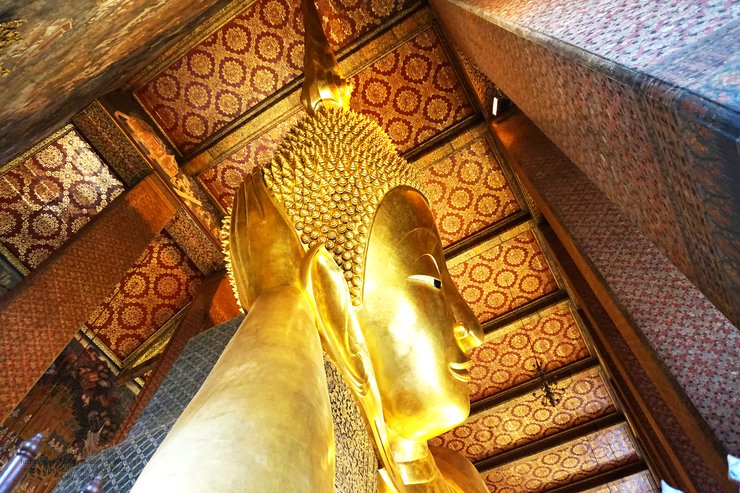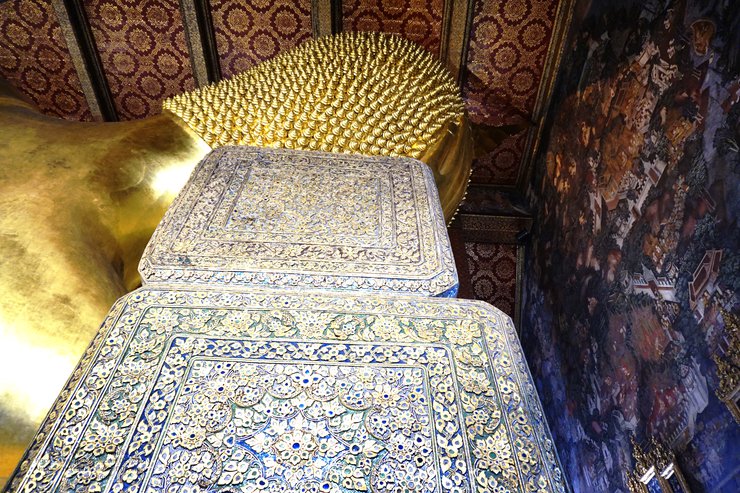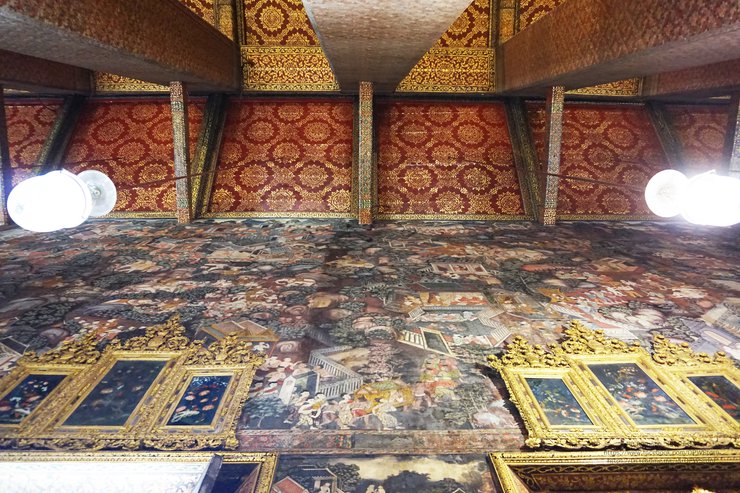เปิดร้านค้ากับ Readme Marketplace
ผู้ที่สามารถเปิดร้านค้ากับ Readme Marketplace จะต้องเป็นสมาชิกของแพลตฟอร์มที่ยืนยันตัวตนแล้วเท่านั้น โดยทำการสมัครได้ที่หน้าแพลตฟอร์ม และกรอกรายละเอียดให้ครบถ้วน และรอการอนุมัติจากทีมงานภายใน 48 ชั่วโมง
เงื่อนไขการกำหนดราคาขายบน Readme Marketplace
สินค้าหรือบริการที่จะสามารถลงขายบน Readme Marketplace ได้จะเป็นเป็นในรูปแบบของบัตรกำนัล gift voucher, e-voucher, บัตรส่วนลด, คูปองร้านอาหาร หรือสินค้าที่จับต้องได้ โดยราคาสินค้าที่มาลงขายจะต้องเป็นราคาที่ดีที่สุดในตลาด หรือเป็นรูปแบบของดีลที่ดีที่สุด เป็นต้น (ต่ำกว่าราคา OTAs และหน้าเว็บไซต์ของโรงแรม หรือแบรนด์นั้นๆ ) ทาง Readme ขอสงวนสิทธิ์ในการปฏิเสธการขาย ในกรณีที่มีการขายแพงกว่าปกติ และไม่ใช่ในรูปแบบตามที่เรากำหนด ยกตัวอย่าง เช่น โปรโมชั่นลด 10 % เมื่อจองผ่านหน้าเว็บไซต์โรงแรม www.abcxxx.com หรือ การฝากร้านเพื่อเชิญชวนให้ไปจองบนแพลตฟอร์มอื่นๆ เป็นต้น
การติดต่อกับผู้ซื้อสินค้า/การจัดส่งสินค้าและบริการ
เนื่องจากตอนนี้อยู่ในช่วงการทดลองใช้ Readme Marketplace ผู้ซื้อจะทำการติดต่อซื้อขายโดยตรงกับช่องทางที่คุณได้ลงทะเบียนไว้เป็นหลัก ซึ่งคุณจะต้องระบุเงื่อนไขและรายละเอียดของสินค้าให้ครบถ้วน รวมทั้งรายละเอียดในการจัดส่งสินค้า เช่น จัดส่งพัสดุโดยระบบขนส่ง, นัดรับ หรือทางอีเมล์ในกรณีที่เป็นประเภท e-voucher เป็นต้นโดยผู้ซื้อจะทำการติดต่อกับผู้ขายผ่านปุ่มที่ระบบตั้งค่าไว้ โดยผูกกับช่องทางที่ทางผู้ขายหรือร้านค้าได้ลงทะเบียนไว้ เพื่อทำการสอบถามเกี่ยวกับสินค้านั้นๆ และทำการปิดการขายโดยตรงกับผู้ขาย หากมีการโอนเงินซื้อสินค้า ผู้ซื้อจะต้องทำการจ่ายให้กับผู้ขายหรือร้านค้าโดยตรงเท่านั้น ไม่ได้ผ่านการชำระเงินของ Readme Marketplace แต่อย่างใด ซึ่งทางผู้ขายหรือร้านค้าจะต้องทำการจัดส่งสินค้า หรือบัตรกำนัลนั้นๆ ไปตามที่อยู่ที่ผู้ซื้อได้ระบุให้ จัดส่งภายในระยะเวลาไม่เกิน 3 วันทำการหลังจากได้รับการชำระเงินแล้วหากกรณีที่ล่าช้าเกิน 3 วันทำการ และมีการร้องเรียนจากทางผู้ซื้อ ทาง Readme จะทำการระงับบัญชีของคุณเป็นระยะเวลา 7 วันทำการ เพื่อดำเนินการตรวจสอบ และหากพบพฤติกรรมที่ผิดกฏนโยบาย หรือ เข้าข่ายหลอกลวง ทาง Readme จะทำการปิดบัญชีของคุณทันที และหากพบว่ามีการดำเนินการฟ้องร้องทางกฏหมายจากทางผู้ซื้อ ทางทีมงาน Readme พร้อมให้ความร่วมมือในการส่งมอบหลักฐานให้กับทางเจ้าหน้าที่ที่เกี่ยวข้องเพื่อดำเนินการตามขั้นของกฏหมาย *หมายเหตุ:
ในระหว่างที่ร้านค้าถูกระงับชั่วคราว 7 วัน ร้านค้าจะไม่สามารถทำการซื้อ/ขายสินค้าต่อได้
แต่คำสั่งซื้อที่คงค้างอยู่ในระบบ คุณสามารถดำเนินการจัดส่งสินค้าได้
การระบุจำนวนสินค้า และการแจ้งสินค้าหมด
เมื่อคุณได้ทำการลงขายสินค้า คุณต้องระบุจำนวนและเงื่อนไขการใช้งานให้ละเอียดครบถ้วน พร้อมเงื่อนไขในการจัดส่งให้ชัดเจน และหากทำการขายสินค้านั้นหมดสต็อกแล้ว จะต้องทำการกดในระบบว่า “สินค้าหมดแล้ว” ทันที เพื่อป้องการความสับสนสำหรับผู้ซื้อ สำหรับสินค้าที่จัดส่งแล้ว
เมื่อผู้ขายได้ทำการจัดส่งสินค้าแล้ว จะต้องทำการแจ้งรหัสติดตามการจัดส่งสินค้า (Tracking code) ให้กับผู้ซื้อภายใน 3 วันทำการนับตั้งแต่วันที่ผู้ซื้อยืนยันการชำระเงินแล้ว มิเช่นนั้นจะถือว่าละเลยและทำผิดกฏนโยบายการใช้งานแพลตฟอร์มทั้งที และบัญชีของคุณจะถูกระงับชั่วคราว 7 วัน โดยทางทีมงานจะทำการตรวจสอบในลำดับต่อไป การระบุข้อความโฆษณา
ห้ามมิให้ลงประกาศขาย หรือ เชิญชวนให้ไปซื้อขายบนแพลตฟอร์มอื่นๆ การระบุข้อความโฆษณา เชิญชวนให้ลูกค้าทำการโอนเงินค่าสินค้าให้โดยตรงไม่ผ่านระบบ Readme ซึ่งไม่ควรระบุข้อความโฆษณาที่เกี่ยวกับข้อมูลบริษัทอื่นๆ เป็นต้น นโยบายสินค้าต้องห้ามและสิ่งของที่ถูกจำกัด
เราอนุญาตให้ลงประกาศขายได้ในเฉพาะที่เป็นสินค้าที่เกี่ยวกับการท่องเที่ยว การเดินทาง ร้านอาหาร และสินค้าที่เกี่ยวข้องหรือใกล้เคียง เช่น บัตรกำนัลที่พัก ร้านอาหาร แพ็คเก็จท่องเที่ยวต่างๆ บัตรส่วนลดพิเศษ สินค้าประเภทกล้องถ่ายรูป ชิ้นส่วนประกอบกล้องถ่ายรูป แก็ตเจ็ตอุปกรณ์ และอื่นๆ เป็นต้น เราไม่อนุญาตให้ขายสินค้าลอกเลียนแบบ หรือ สินค้าที่ละเมิดทรัพย์สินทางปัญญาไม่ว่าในกรณีใดๆ ก็ตาม หรือสินค้าใดๆ ที่ไม่เกี่ยวข้อง ทางทีมงานมีสิทธิ์ปฏิเสธการลงขายได้ทุกเมื่อ โดยไม่ต้องแจ้งให้ทราบล่วงหน้า หากสินค้าของคุณผิดกฏและถูกระงับอย่างน้อย 7 วันทำการ หรือถูกลบ คุณจะได้รับข้อความแจ้งเตือนว่า...สินค้าของท่านถูกระงับ(ถูกลบแล้ว) เนื่องจาก ผิดกฏนโยบายการลงขายสินค้า เป็นต้น กฎเกณฑ์การโฆษณาสินค้า
ห้ามใช้ข้อความ คำโฆษณาเชิญชวนเกินจริงเพื่อให้ผู้อื่นหลงเชื่อ และต้องระบุเงื่อนไขและรายละเอียดของสินค้าให้ครบถ้วน พร้อมระบุราคาขายให้ชัดเจนทุกครั้ง
การลงขายสินค้าที่ต้องมีเครื่องหมาย มอก.
ในกรณีที่มีการลงขายสินค้าประเภทอุปกรณ์กล้องถ่ายรูป และชิ้นส่วนแก็ตเจ็ต หรืออุปกรณ์อิเล็กทรอนิกส์ต่างๆ จะต้องระบุว่าอุปกรณ์ชิ้นนั้นได้รับเครื่องหมายมาตรฐานใด ที่แสดงว่าสินค้าได้รับมาตรฐานหรือผ่านการรับรองมาตรฐานแล้ว เช่น เครื่องหมาย มอก. หรือเครื่องหมายตามมาตรฐานที่ตามกฏหมายระบุไว้ เช็ครายละเอียดได้ที่https://www.tisi.go.th/website/standardlist/comp_thai
การพิจารณาระงับบัญชีร้านค้า มีเกณฑ์การระงับร้านค้ามีดังนี้
- ตรวจสอบและพบว่ามีการลงขายสินค้าต้องห้าม/สินค้าเข้าข่ายผิดกฎการขายภายในร้านค้า หรือพบพฤติกรรมที่ไม่เหมาะสมในการลงขายสินค้า สแปม หรือ เข้าข่ายหลอกลวงเป็นต้น
- มีการแจ้งรีพอร์ตสแปม หรือ ร้องเรียนมาจากทางผู้ซื้อและตรวจสอบพบว่าเข้าข่ายผิดจริง
ทาง Readme ขอสงวนสิทธิ์ในการระงับร้านค้าของท่านทันทีที่ตรวจพบการกระทำผิด โดยไม่ต้องแจ้งให้ทราบล่วงหน้า และหากร้านค้ายังคงกระทำผิดอยู่จะถูกระงับร้านค้าและจะได้รับข้อความแจ้งเตือนทางอีเมล์ พร้อมทั้งลบบัญชีของคุณทันที การตัดสินของทาง Readme ถือเป็นที่สิ้นสุด *หมายเหตุ:
ในระหว่างที่ร้านค้าถูกระงับชั่วคราว 7 วัน ร้านค้าจะไม่สามารถทำการซื้อ/ขายสินค้าต่อได้ แต่คำสั่งซื้อที่คงค้างอยู่ในระบบ คุณสามารถดำเนินการจัดส่งสินค้าได้
ค่าธรรมเนียมในการเปิดร้านค้าทางการ (Verified Shop) กับ Readme Marketplace
ไม่มีค่าใช้จ่าย จนกว่าจะแจ้งประกาศอย่างเป็นทางการ (อยู่ในช่วงทดลองใช้งาน)
ข้อควรระวังเพื่อป้องกันการโกงจากมิจชาชีพ
ไม่แนะนำให้ส่งสินค้าให้กับผู้ซื้อจนกว่าจะได้รับการคอนเฟิร์มการซื้อขายที่ชัดเจน หรือได้รับใบสลิปโอนเงินจากผู้ซื้อ ผู้ขายต้องทำการตรวจสอบให้แน่ใจว่ามียอดเงินเข้าบัญชีจริงก่อนส่งสินค้าเสมอ ทาง Readme ไม่มีส่วนรับผิดชอบต่อความเสียหายที่จะเกิดขึ้นได้
ต้องการปิดบัญชีร้านค้าทำยังไง
คุณสามารถแจ้งความประสงค์ต้องการปิดร้านค้ามาทางอีเมล์ [email protected]
ต้องการความช่วยเหลือในการเปิดร้านค้าต้องทำอย่างไรสามารถติดต่อทีมงานได้ที่ m.me/th.readme.me หรืออีเมล์ [email protected] โทร. 02-937-4499#500, 082-439-1599
ในเวลาทำการ จันทร์- ศุกร์ 09.00-18.00 (ปิดทำการทุกเสาร์ อาทิตย์ และวันหยุดนักขัติฤกษ์)
สามารถอ่านข้อตกลงและเงื่อนไขเพิ่มเติมได้ที่ Click























